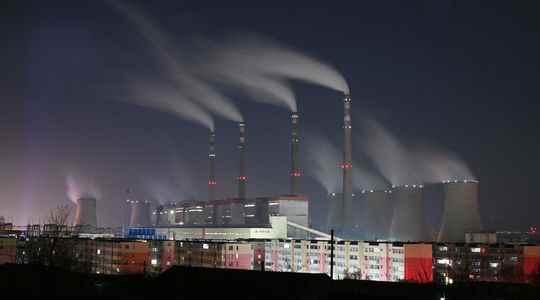A disastrous snub to the planet, and to the climate. The British leaders, hosts of the last edition of the United Nations Conference on the climate had however sworn it, hand on the heart. COP26 was to be the one that relegates coal “to the dustbin of history”. Beautiful phrases do not make an energy policy. Coal has hardly ever done better than in 2021.
After the Covid air hole in 2020, its consumption skyrocketed. Data from the International Energy Agency (IEA) is clear: global electricity generation from coal grew by 9% in 2021, a new record. By integrating the coal used in industrial production (for cement or steel, for example), the increase falls to 6%, but is close to the records reached in 2014. The situation is a “worrying sign of the extent of the delay taken by the world in its efforts to reduce emissions and move towards net zero emissions”, recalled a few days ago Fatih Birol, boss of the IEA.
How to explain such a return to business of public enemy no. 1 for the climate? “Coal plays a systemic role in the global electricity model. With the price of gas having seen extraordinary increases in 2021, it has become much more competitive in certain regions to run coal rather than gas plants”, analyzes Marc-Antoine Eyl-Mazzega, Director of the Energy & Climate Center at Ifri. By far, China is primarily responsible for the sustained increase in demand. But the results of Western countries are hardly more brilliant. Pinching its nose, France did not hesitate to restart its old coal-fired power stations to secure the network this winter. The government has indeed temporarily relaxed the limits of use of its last coal-fired power stations to ensure the electricity supply, very tight this winter, according to a decree published on Sunday in the Official Journal.
The worst is not behind us
Germany, which is closing its low-carbon nuclear power, depends largely on black rock for its electricity production. In the United States, the black Democratic coal baron Joe Manchin is using all his weight to block the way to a Joe Biden who is seeking to accelerate in renewables.
The worst is not behind us. In its forecasts, the IEA estimates that demand should increase further until 2024, driven by China, India and other Asian countries. Where is the spirit of Glasgow? One clue was in the list of signatories to the coal exit agreement. The countries that have committed to exit, with deadlines around 2030, together account for only 3% of global coal-related emissions. China, the United States, India, Russia have not signed the agreement. However, this band of four represents more than 70% of the world volume of coal consumed. “There is a big inertia in the global energy system,” insists Marc-Antoine Eyl-Mazzega. This researcher has identified nearly 2,200 gigawatts of coal-fired power generation capacity worldwide, or 35% of the global electricity mix.
Getting out of it quickly will take more than promises. “It is possible to withdraw 500 gigawatts of coal production in emerging countries by investing 1,700 billion dollars in low-carbon solutions. But financial means must be put in place to help developing countries”, judges the ‘expert. And, moreover, a much higher carbon price than at present will be essential in the rich countries.
